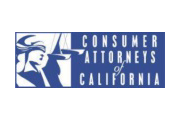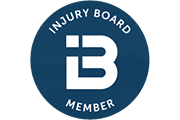Any accident on the road can be unsettling, but the situation can feel especially dire when the other driver is uninsured. Although liability insurance is a legal requirement for all California drivers, not everyone adheres to this rule. This oversight can complicate the process of seeking compensation for damages or injuries incurred during an accident.
However, California motorists have a safeguard: uninsured motorist coverage is included in all insurance policies. This coverage can pay for medical expenses, pain and suffering, and other damages caused by the uninsured driver. To protect your right to compensation under this policy, it is essential to take the following steps in the moments after the collision.
Immediately after the accident, make sure that you call 911 and report it to the police. An uninsured driver may attempt to dissuade you from doing this, fearing the legal repercussions of their lack of insurance. However, obtaining a police report is essential for several reasons. California requires you to report any accident that involves injury, death, or property damage over $1,000 within 24 hours, and calling 911 will help you fulfill this requirement.
The police report will also serve as an official record of the incident, detailing important facts such as the names of the involved drivers, a diagram of the crash, and, in some cases, an initial determination of fault. This report can be valuable when filing a claim with your insurance company, as it provides a relatively neutral account of the accident.
After a scary experience like a car accident, it’s common to feel a surge of adrenaline that masks the pain of your injuries. Some injuries, such as internal bleeding or concussions, can have delayed symptoms. This means that although you might feel fine initially after the accident, you could be suffering from potentially serious injuries.
As soon as possible after the accident, go to the hospital and get evaluated by a doctor. This step not only protects your health but also creates documentation of your injuries. Medical records serve as concrete evidence of the injuries that you sustained, directly linking them to the accident. These records will be very important in your uninsured motorist claim, so make sure to seek treatment.
While the other driver may not have insurance information to provide, collecting their contact and license information is still essential. These details are fundamental to your claim, serving as a starting point for any legal or insurance proceedings.
Approach the driver and ask for this information, but refrain from discussing how the accident occurred, or whether you have any injuries. Anything you say could be used against you in the future claim, especially if you need to file a lawsuit against the driver for the remainder of your damages.
If you can move around the scene of the accident without putting yourself in danger or exacerbating your injuries, try to document as much evidence as possible. You should take photographs of your vehicle, any visible injuries that you might have, and the surrounding area. You should also capture details such as skid marks on the ground or traffic signs in the area, as these can provide context about the circumstances leading up to the crash.
Additionally, taking notes on the sequence of events, weather conditions, and any conversations with the other driver can provide valuable context to your claim. If possible, record these details in a journal or on your phone for later reference.
Next, you should approach any witnesses in the area and ask for their contact information. Witness statements can bolster your claim, providing an unbiased account of the accident. These individuals can help corroborate the sequence of events leading up to the collision, adding credibility and depth to your version of events.
When you approach these witnesses, ask if they saw the accident happen and whether they would feel comfortable providing more information at a later time. Make sure to gather their names, phone numbers, email addresses, or any other contact information they feel comfortable providing. If you are unable to speak to witnesses at the time, don’t worry—the police report may also include their information.
Your uninsured motorist coverage will be your primary source of compensation in an accident with a driver who lacks insurance. However, you likely haven’t looked at your policy since the day that you enrolled. It is important to familiarize yourself with these terms so that you know what to expect during the insurance process.
Obtain a copy of your car insurance policy and read it closely. Familiarize yourself with the coverage limits, deductibles, and the process for filing a claim. This knowledge is empowering, enabling you to navigate the claims process with confidence and ensure you’re fully utilizing the protections afforded by your policy.
Navigating an uninsured motorist claim can be overwhelming, especially if you are also recovering from a serious injury. The policy language can be confusing, and dealing with insurance companies can be tricky. Insurance representatives aim to protect the company’s best interests, not yours, which can result in unfair outcomes.
In these situations, you need an advocate on your side who is committed to helping you recover fair compensation. A California car accident attorney can provide invaluable assistance during the insurance process, helping you understand your rights and coverage.
Your lawyer can negotiate with your insurance company on your behalf, validating that all settlement offers meet your needs for compensation. They can represent you in court if you need to file a lawsuit against the uninsured driver, holding them accountable for the remainder of your damages.
After seeking medical care for your injuries, do not speak to any insurance representatives or the at-fault driver. Instead, contact a San Francisco car accident lawyer right away to discuss your case and take your first steps toward recovery.





